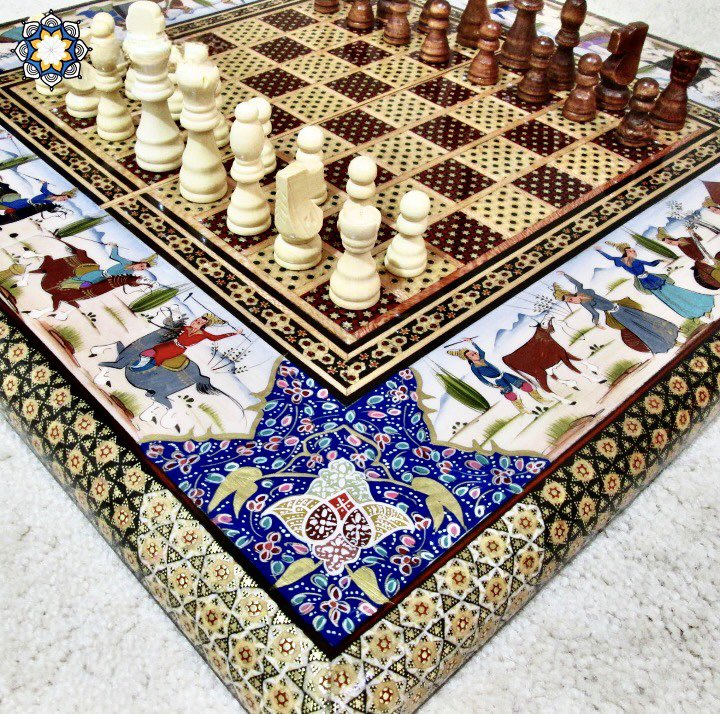Although many think the samosa originated in South Asia, its roots can be traced back to Central Asia & the Middle East. In Arab cookbooks dating from the 10th to 13th centuries, pastries were referred to as 'sanbusak,' derived from the Persian term 'Sanbosag'
A samosa thread…
A samosa thread…

1/ The samosa has embarked on a remarkable journey, leaving its mark in various corners of the world. From Egypt to Libya, and from Central Asia to India, the triangular stuffed pastry has earned widespread fame under different names. 

2/ Originally known as samsa, paying homage to the pyramids of Central Asia, historical records also mention it as sanbusak, sanbusaq, or even sanbusaj, all tracing their roots back to the Persian word, sanbosag. 

3/ For the past eight centuries, the samosa has held immense popularity in South Asian cuisine. Its delightful taste knows no boundaries of class or status. 

4/ This savory treat has graced the tables of Sultans and Emperors in opulent courts and has equally been relished in the bustling 'gullies' and streets of towns and cities across India and Pakistan. 

5/ It is believed historically, in Central Asian communities, samosas were favored for their convenience, particularly during travel, leading people to both prepare and relish these savory delights. 

6/ One of the earliest recorded mentions of the samosa was discovered in the 11th century work of the Iranian historian Abul-Fazl Beyhaqi, called Tarikh-e Beyhaghi, where it was referred to as 'Sambosa.'
Persian manuscript Nimatnama-i-Nasiruddin-Shahi explaining how samosas… https://t.co/DHG3IEY9V8twitter.com/i/web/status/1…

Persian manuscript Nimatnama-i-Nasiruddin-Shahi explaining how samosas… https://t.co/DHG3IEY9V8twitter.com/i/web/status/1…

7/ These samosas were remarkably small in size, making them a convenient snack for travelers who could effortlessly pack them into their saddlebags and enjoy them on the go. 

8/ The samosa's introduction to South Asia can be traced back to the period of the Muslim Delhi Sultanate when skilled cooks from the Middle East and Central Asia found employment in the Sultan's kitchens. 

9/ Around the year 1300, the scholar and court poet, Amir Khusro, documented that the princes and nobles relished the 'samosa prepared from meat, ghee, onion, and so on.'
Medieval Indian cookbook with Persian manuscript Nimatnama-i-Nasiruddin-Shahi (c. 16th century) showing… https://t.co/Ea09igR4cHtwitter.com/i/web/status/1…

Medieval Indian cookbook with Persian manuscript Nimatnama-i-Nasiruddin-Shahi (c. 16th century) showing… https://t.co/Ea09igR4cHtwitter.com/i/web/status/1…

10/ Moroccan traveler Ibn Battuta mentioned the wafer-thin pastry filled with mince and peas, served at opulent banquets during the 14th Century at the court of Mohammad bin Tughlaq in Delhi - this continues its legacy in Hyderabad as the beloved "lukhmi." 

11/ An equally beloved variation of South Asian street food is the Samosa Chaat. This delectable dish involves topping the samosa with yoghurt, tamarind chutney, finely chopped onions, and masala. The incredible combination of contrasting flavors, textures, & temperatures creates… https://t.co/XomPPD5Mbitwitter.com/i/web/status/1…


12/ In Arab countries near the Mediterranean, the semi-circular 'sambusak' features a delightful filling of minced chicken or meat combined with onion, feta cheese, and spinach. 

13/ The types and varieties of samosa made in Maldivian cuisine are known as bajiyaa. They are filled with a mixture including fish or tuna and onions 

14/ In Indonesia, samosas are locally known as samosa, filled with potato, cheese, curry, rousong or noodles as adapted to local taste. It usually served as snack with sambal. Samosa is almost similar to Indonesian pastel, panada and epok-epok 

15/ In Turkic-speaking countries of Central Asia, the 'somsa' takes a different approach as it is baked rather than fried. The most favored filling consists of minced lamb and onion, though cheese, beef, and pumpkin variations are also highly popular. 

16/ Watch chef Abuzar bake traditional somsa
17/ The 'sambusa' holds a significant place as a staple food in the Horn of Africa, particularly in Ethiopia, Somalia & Eritrea. This cherished snack is traditionally served during special occasions such as Ramadan, Christmas, & other festive celebrations.
Somali Lentil Sambusa
Somali Lentil Sambusa

18/ Check out jkizondo_swahilibites on IG show us how to fold the sambusa Swahili style
19/ You can find many fusion twists on the traditional samosa.
Check out these chocolate samosas filled with stewed apple
Samosas dipped in chocolate covered with pistachio crumbs and filled with a cooked apple! A twist on apple pie
cookwithaims on IG
Check out these chocolate samosas filled with stewed apple
Samosas dipped in chocolate covered with pistachio crumbs and filled with a cooked apple! A twist on apple pie
cookwithaims on IG

20/ Today, the samosa has become a beloved snack in numerous regions worldwide. Its enduring popularity and survival through the centuries can be attributed to a significant factor: the diverse array of fillings it offers, catering to various tastes across the globe. 

Want to know more about food heritage across the Muslim World?
Join us at our online event & immerse yourself in the tantalizing world of culinary traditions at "The Art of Food across the Muslim World: Preserving Tradition & Reimagining the Future."
3 August
6:00 - 7:30pm BST… https://t.co/4ZMtYNv2pgtwitter.com/i/web/status/1…

Join us at our online event & immerse yourself in the tantalizing world of culinary traditions at "The Art of Food across the Muslim World: Preserving Tradition & Reimagining the Future."
3 August
6:00 - 7:30pm BST… https://t.co/4ZMtYNv2pgtwitter.com/i/web/status/1…

• • •
Missing some Tweet in this thread? You can try to
force a refresh

 Read on Twitter
Read on Twitter


















